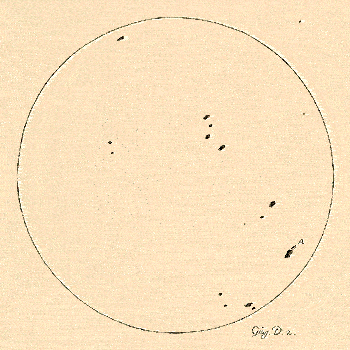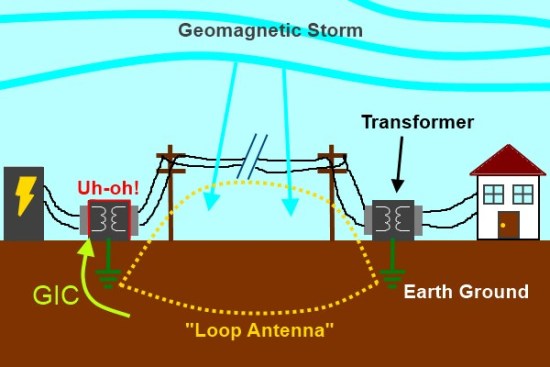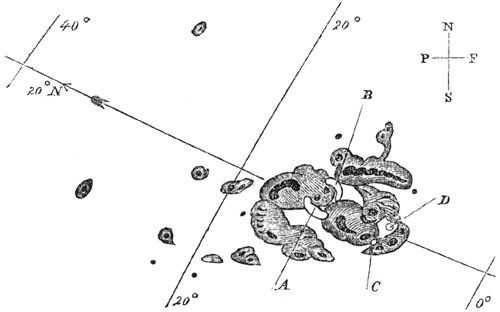Anne Kimber and Sam Wormley team up to explore the survival
of our power grids when impacted by a major solar outburst.
We discuss what causes solar outbursts and space weather,
the basic structure of our power grids, why they are
vulnerable, and ways to protect them.
Solar Cycles
Coronal Mass Ejection (CME)
Electromagnetic Induction
Carrington Event (September of 1859)
Space Weather Prediction Center (SWPC)
Part II - Anne Kimber
Solar Cycles
The Galileo Project | Science | Sunspots
http://galileo.rice.edu/sci/observations/sunspots.html
http://galileo.rice.edu/sci/observations/sunspot_drawings.html
 Galileo's drawings (37 days)
June and July of 1612
Wikipedia: Solar Cycle
https://en.wikipedia.org/wiki/Solar_cycle
Galileo's drawings (37 days)
June and July of 1612
Wikipedia: Solar Cycle
https://en.wikipedia.org/wiki/Solar_cycle
 The solar cycle, also known as the solar magnetic activity
cycle, sunspot cycle, or Schwabe cycle, is a nearly periodic
11-year change in the Sun's activity measured in terms of
variations in the number of observed sunspots on the Sun's
surface. Over the period of a solar cycle, levels of solar
radiation and ejection of solar material, the number and
size of sunspots, solar flares, and coronal loops all
exhibit a synchronized fluctuation from a period of minimum
activity to a period of a maximum activity back to a period
of minimum activity.
The magnetic field of the Sun flips during each solar cycle,
with the flip occurring when the solar cycle is near its
maximum. After two solar cycles, the Sun's magnetic field
returns to its original state, completing what is known as a
Hale cycle.
This cycle has been observed for centuries by changes in the
Sun's appearance and by terrestrial phenomena such as aurora
but was not clearly identified until 1843. Solar activity,
driven by both the solar cycle and transient aperiodic
processes, governs the environment of interplanetary space
by creating space weather and impacting space- and
ground-based technologies as well as the Earth's atmosphere
and also possibly climate fluctuations on scales of
centuries and longer.
Understanding and predicting the solar cycle remains one of
the grand challenges in astrophysics with major
ramifications for space science and the understanding of
magnetohydrodynamic phenomena elsewhere in the universe.
The solar cycle, also known as the solar magnetic activity
cycle, sunspot cycle, or Schwabe cycle, is a nearly periodic
11-year change in the Sun's activity measured in terms of
variations in the number of observed sunspots on the Sun's
surface. Over the period of a solar cycle, levels of solar
radiation and ejection of solar material, the number and
size of sunspots, solar flares, and coronal loops all
exhibit a synchronized fluctuation from a period of minimum
activity to a period of a maximum activity back to a period
of minimum activity.
The magnetic field of the Sun flips during each solar cycle,
with the flip occurring when the solar cycle is near its
maximum. After two solar cycles, the Sun's magnetic field
returns to its original state, completing what is known as a
Hale cycle.
This cycle has been observed for centuries by changes in the
Sun's appearance and by terrestrial phenomena such as aurora
but was not clearly identified until 1843. Solar activity,
driven by both the solar cycle and transient aperiodic
processes, governs the environment of interplanetary space
by creating space weather and impacting space- and
ground-based technologies as well as the Earth's atmosphere
and also possibly climate fluctuations on scales of
centuries and longer.
Understanding and predicting the solar cycle remains one of
the grand challenges in astrophysics with major
ramifications for space science and the understanding of
magnetohydrodynamic phenomena elsewhere in the universe.
Wikipedia: Coronal Mass Ejection (CME)
https://en.wikipedia.org/wiki/Coronal_mass_ejection
https://en.wikipedia.org/wiki/Coronal_mass_ejection#Future_risk
 A coronal mass ejection (CME) is a significant release of
plasma and accompanying magnetic field from the Sun's corona
into the heliosphere. CMEs are often associated with solar
flares and other forms of solar activity, but a broadly
accepted theoretical understanding of these relationships
has not been established.
If a CME enters interplanetary space, it is referred to as
an interplanetary coronal mass ejection (ICME). ICMEs are
capable of reaching and colliding with Earth's
magnetosphere, where they can cause geomagnetic storms,
aurorae, and in rare cases damage to electrical power grids.
The largest recorded geomagnetic perturbation, resulting
presumably from a CME, was the solar storm of 1859. Also
known as the Carrington Event, it disabled parts of the at
the time newly created United States telegraph network,
starting fires and shocking some telegraph operators.
A coronal mass ejection (CME) is a significant release of
plasma and accompanying magnetic field from the Sun's corona
into the heliosphere. CMEs are often associated with solar
flares and other forms of solar activity, but a broadly
accepted theoretical understanding of these relationships
has not been established.
If a CME enters interplanetary space, it is referred to as
an interplanetary coronal mass ejection (ICME). ICMEs are
capable of reaching and colliding with Earth's
magnetosphere, where they can cause geomagnetic storms,
aurorae, and in rare cases damage to electrical power grids.
The largest recorded geomagnetic perturbation, resulting
presumably from a CME, was the solar storm of 1859. Also
known as the Carrington Event, it disabled parts of the at
the time newly created United States telegraph network,
starting fires and shocking some telegraph operators.
Some Basic Physics - Electromagnetic Induction
Wikipedia: Faraday's law of induction
https://en.wikipedia.org/wiki/Faraday%27s_law_of_induction
Faraday's law) is a basic law of electromagnetism predicting
how a magnetic field will interact with an electric circuit
to produce an electromotive force (emf)-a phenomenon known
as electromagnetic induction. It is the fundamental
operating principle of transformers, inductors, and many
types of electrical motors, generators and solenoids.
Wikipedia: Lenz's law
https://en.wikipedia.org/wiki/Lenz%27s_law
Lenz's law is contained in the rigorous treatment of
Faraday's law of induction (the magnitude of EMF induced in
a coil is proportional to the rate of change of the magnetic
field).
 Wikipedia: Geomagnetically induced current
https://en.wikipedia.org/wiki/Geomagnetically_induced_current
Geomagnetically induced currents (GIC) are electrical
currents induced at the Earth's surface by rapid changes in
the geomagnetic field caused by space weather events. GICs
can affect the normal operation of long electrical conductor
systems such as electric transmission grids, buried
pipelines, and under sea internet communication cables. The
geomagnetic disturbances which induce GICs include
geomagnetic storms and substorms where the most severe
disturbances occur at high geomagnetic latitudes.
Wikipedia: Geomagnetically induced current
https://en.wikipedia.org/wiki/Geomagnetically_induced_current
Geomagnetically induced currents (GIC) are electrical
currents induced at the Earth's surface by rapid changes in
the geomagnetic field caused by space weather events. GICs
can affect the normal operation of long electrical conductor
systems such as electric transmission grids, buried
pipelines, and under sea internet communication cables. The
geomagnetic disturbances which induce GICs include
geomagnetic storms and substorms where the most severe
disturbances occur at high geomagnetic latitudes.

Wikipedia: Carrington Event (September of 1859)
https://en.wikipedia.org/wiki/Carrington_Event
The Carrington Event was the most intense geomagnetic storm
in recorded history, peaking from 1 to 2 September 1859
during solar cycle 10. It created strong auroral displays
that were reported globally and caused sparking and even
fires in multiple telegraph stations.
 Drawing of sunspots (with flares) by Richard Carrington
On 1-2 September 1859, one of the largest geomagnetic storms
(as recorded by ground-based magnetometers) occurred.
Estimates of the storm strength (Dst) range from -0.80 to
-1.75 µT (800-1,750 nT).
The geomagnetic storm is thought to have been initiated by a
major CME that traveled directly toward Earth, taking 17.6
hours to make the 93 million mile journey. Typical CMEs take
several days to arrive at Earth, but it is believed that the
relatively high speed of this CME was made possible by a
prior CME, perhaps the cause of the large aurora event on 29
August that "cleared the way" of ambient solar wind plasma
for the Carrington Event.
Physics Girl: It missed us by 9 days (11+ min)
https://www.youtube.com/watch?v=85-p9EIEVUA
Drawing of sunspots (with flares) by Richard Carrington
On 1-2 September 1859, one of the largest geomagnetic storms
(as recorded by ground-based magnetometers) occurred.
Estimates of the storm strength (Dst) range from -0.80 to
-1.75 µT (800-1,750 nT).
The geomagnetic storm is thought to have been initiated by a
major CME that traveled directly toward Earth, taking 17.6
hours to make the 93 million mile journey. Typical CMEs take
several days to arrive at Earth, but it is believed that the
relatively high speed of this CME was made possible by a
prior CME, perhaps the cause of the large aurora event on 29
August that "cleared the way" of ambient solar wind plasma
for the Carrington Event.
Physics Girl: It missed us by 9 days (11+ min)
https://www.youtube.com/watch?v=85-p9EIEVUA
Space Weather Prediction Center (SWPC)
https://www.swpc.noaa.gov
Space Weather impacts numerous facets of everyday life, from
where airplanes can safely fly, to how accurately a farmer
plows his field. In addition, there are a large variety of
phenomena that are driven by the variability of the sun over
periods ranging from hours to years. SWPC provides
information for novices and experts alike about the impacts
and phenomena of Space Weather.
Alerts, Watches, and Warnings
https://www.swpc.noaa.gov/products/alerts-watches-and-warnings
Similar to the bulletins put out by the NWS local forecast
offices, SWPC provides Alerts, Watches and Warnings to the
public at large about what to expect from Space Weather.
These bulletins are levels of severity of the solar activity
that can be expected to impact the Earth’s environment.
Impacts
Earth's Climate
Electric Power Transmission
GPS Systems
HF Radio Communications
Satellite Communications
Satellite Drag
Solar Storm and Internet Apocalypse
Internet Infrastructure
One of the overlooked aspects of everyday essentials is
internet access, but the world's top medium for
communication was recently found to be at risk from the
intense emissions from the sun called solar superstorms.
According to the study titled "Solar Superstorms: Planning
for an Internet Apocalypse," the internet could be massively
affected if ever a solar superstorm takes place.
If the catastrophic emissions from the sun hit, the undersea
cable responsible for maintaining the internet access of the
globe could incur severe damage.
Anne Kimber:
o Basic Structure of the Power Grid
o How are components vulnerable to geomagnetic storms
o Technologies employed to protect the grid and its components
sam.wormley@icloud.com
Galileo's drawings (37 days) June and July of 1612 Wikipedia: Solar Cycle https://en.wikipedia.org/wiki/Solar_cycle
The solar cycle, also known as the solar magnetic activity cycle, sunspot cycle, or Schwabe cycle, is a nearly periodic 11-year change in the Sun's activity measured in terms of variations in the number of observed sunspots on the Sun's surface. Over the period of a solar cycle, levels of solar radiation and ejection of solar material, the number and size of sunspots, solar flares, and coronal loops all exhibit a synchronized fluctuation from a period of minimum activity to a period of a maximum activity back to a period of minimum activity. The magnetic field of the Sun flips during each solar cycle, with the flip occurring when the solar cycle is near its maximum. After two solar cycles, the Sun's magnetic field returns to its original state, completing what is known as a Hale cycle. This cycle has been observed for centuries by changes in the Sun's appearance and by terrestrial phenomena such as aurora but was not clearly identified until 1843. Solar activity, driven by both the solar cycle and transient aperiodic processes, governs the environment of interplanetary space by creating space weather and impacting space- and ground-based technologies as well as the Earth's atmosphere and also possibly climate fluctuations on scales of centuries and longer. Understanding and predicting the solar cycle remains one of the grand challenges in astrophysics with major ramifications for space science and the understanding of magnetohydrodynamic phenomena elsewhere in the universe.
A coronal mass ejection (CME) is a significant release of plasma and accompanying magnetic field from the Sun's corona into the heliosphere. CMEs are often associated with solar flares and other forms of solar activity, but a broadly accepted theoretical understanding of these relationships has not been established. If a CME enters interplanetary space, it is referred to as an interplanetary coronal mass ejection (ICME). ICMEs are capable of reaching and colliding with Earth's magnetosphere, where they can cause geomagnetic storms, aurorae, and in rare cases damage to electrical power grids. The largest recorded geomagnetic perturbation, resulting presumably from a CME, was the solar storm of 1859. Also known as the Carrington Event, it disabled parts of the at the time newly created United States telegraph network, starting fires and shocking some telegraph operators.
Wikipedia: Geomagnetically induced current https://en.wikipedia.org/wiki/Geomagnetically_induced_current Geomagnetically induced currents (GIC) are electrical currents induced at the Earth's surface by rapid changes in the geomagnetic field caused by space weather events. GICs can affect the normal operation of long electrical conductor systems such as electric transmission grids, buried pipelines, and under sea internet communication cables. The geomagnetic disturbances which induce GICs include geomagnetic storms and substorms where the most severe disturbances occur at high geomagnetic latitudes.

Drawing of sunspots (with flares) by Richard Carrington On 1-2 September 1859, one of the largest geomagnetic storms (as recorded by ground-based magnetometers) occurred. Estimates of the storm strength (Dst) range from -0.80 to -1.75 µT (800-1,750 nT). The geomagnetic storm is thought to have been initiated by a major CME that traveled directly toward Earth, taking 17.6 hours to make the 93 million mile journey. Typical CMEs take several days to arrive at Earth, but it is believed that the relatively high speed of this CME was made possible by a prior CME, perhaps the cause of the large aurora event on 29 August that "cleared the way" of ambient solar wind plasma for the Carrington Event. Physics Girl: It missed us by 9 days (11+ min) https://www.youtube.com/watch?v=85-p9EIEVUA